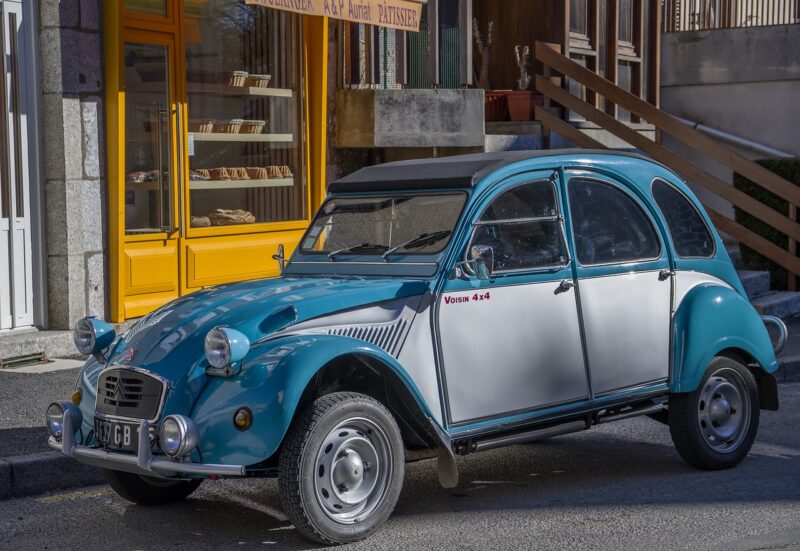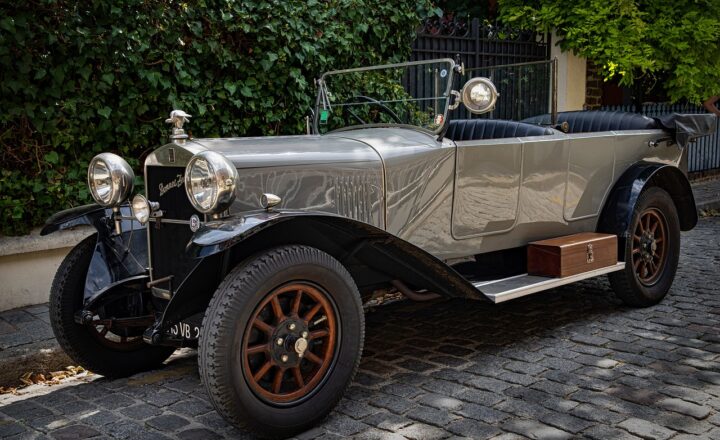The Citroën 2CV: France’s Iconic Economy Car with a Charming Design
November 13, 2024

The Citroën 2CV, affectionately known as “Duchesse” or simply “2CV,” is a quintessential piece of French automotive history. Launched in 1948, it was not only a car but a cultural phenomenon, representing an era of post-war recovery and a new kind of mobility for the masses. It combined affordability, functionality, and whimsical design in a way that few vehicles have matched since. In this article, we will explore the history, design features, significance, and enduring legacy of the Citroën 2CV.
1. The Birth of the Citroën 2CV
The conception of the Citroën 2CV originated in the aftermath of World War II. The French economy was in tatters, and there was an urgent need for affordable transportation that could cater to the everyday person. The challenge was taken on by Citroën’s chief engineer, Pierre Jules Boulanger. He envisioned a simple, lightweight car that could comfortably carry a family of four and a basket of farm goods on rough country roads.
The term “2CV” stands for “deux chevaux-vapeur,” which means “two steam horsepower.” This designation was a nod to the car’s humble 29-horsepower engine, emphasizing its focus on economy rather than power. After years of prototyping, the vehicle debuted at the Paris Motor Show in 1948 to much acclaim.
2. Design Features That Made History
The design of the Citroën 2CV is as iconic as its functionality. Its most recognizable features include:
- Minimalist Aesthetic: The 2CV is characterized by its simple, utilitarian design. The body, made from lightweight sheet metal, was curved for aerodynamics, with a distinctive corrugated texture that kept production costs low while exuding charm.
- Spacious Interior: Despite its compact exterior dimensions, the 2CV featured an impressive interior that could accommodate four passengers comfortably. The innovative suspension system ensured a smooth ride over bumpy terrain, making it a practical choice for rural drivers.
- Remarkable Versatility: The rear seats could be easily folded down, allowing the car to transport larger items—ideal for farmers who needed to haul produce or families going on picnics.
- Distinctive Headlights and Grille: The round headlights and trapezoidal grille contributed to the car’s endearing personality and made it instantly recognizable on the road.
These design elements combined practicality with aesthetics, allowing the 2CV to stand out while serving its purpose effectively.
3. The 2CV’s Impact on French Society
The Citroën 2CV is more than just a car; it has become a symbol of the French spirit and ingenuity. It democratized car ownership in France, giving millions of people access to personal transportation for the first time. During its production run from 1948 to 1990, over 3.8 million units were sold, confirming its status as one of the most successful cars in automotive history.
The 2CV was particularly popular in rural areas, where it played a vital role in transforming the way farmers operated. Its capabilities allowed farmers to travel to markets more easily, thus improving their livelihoods and connecting them to broader economic opportunities.
Moreover, the 2CV became a canvas for personal expression. Owners often customized their vehicles with eye-catching colors and patterns, contributing to a vibrant subculture of 2CV enthusiasts. Festivals and gatherings dedicated to the car continue to be held across Europe, celebrating this beloved icon of simple, joyful living.
4. Enduring Popularity and Legacy
Even decades after it ceased production, the Citroën 2CV remains a beloved classic among automotive enthusiasts. Its character, combined with practical engineering, captures the imagination of collectors and restorers around the world. Various clubs and online communities continue to foster love for this charming vehicle, ensuring that its spirit lives on.
Moreover, the 2CV’s influence can be seen in various aspects of car design in the modern era. Its concept of functional, cost-effective vehicles paved the way for future economy cars that prioritize utility over luxury. Icons like the VW Beetle and Mini Cooper drew inspiration from the simplicity and accessibility championed by the 2CV, confirming its enduring legacy.
5. Conclusion: More Than Just a Car
The Citroën 2CV is an indelible part of not just automotive history but also of French culture. It symbolizes a shift towards accessible transportation for ordinary people and remains a testament to innovative design and engineering. While other cars may come and go, the 2CV continues to evoke nostalgia and admiration for its charm, practicality, and the joy it brought to countless lives.
History has shown that the heart of a car is not just in its performance but also in how it connects with people and enhances their lives. The Citroën 2CV is a shining example of this principle, and it will undoubtedly continue to drive into the hearts of future generations.







